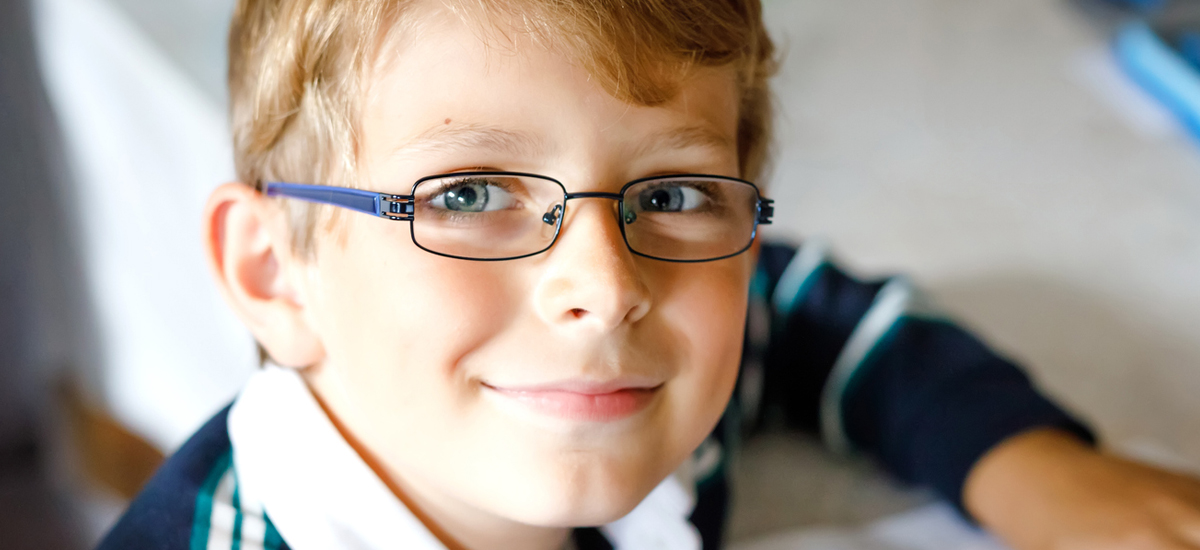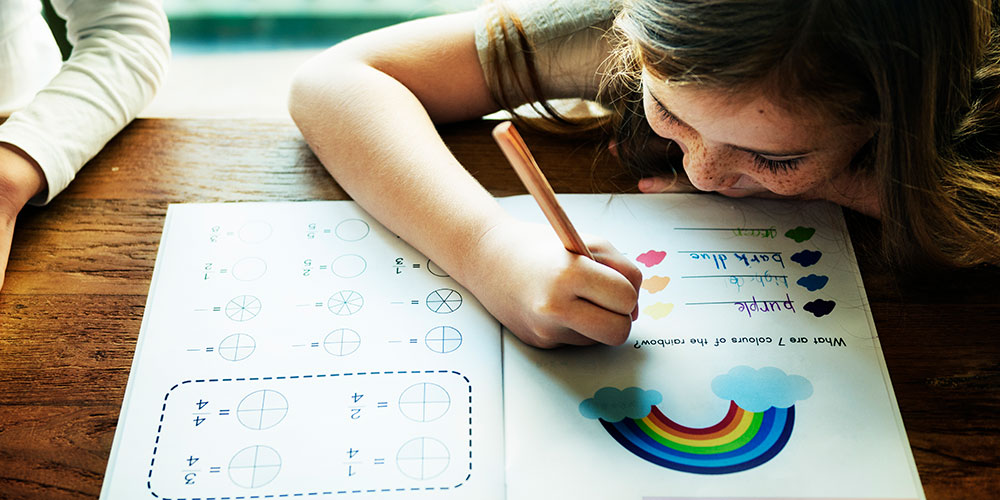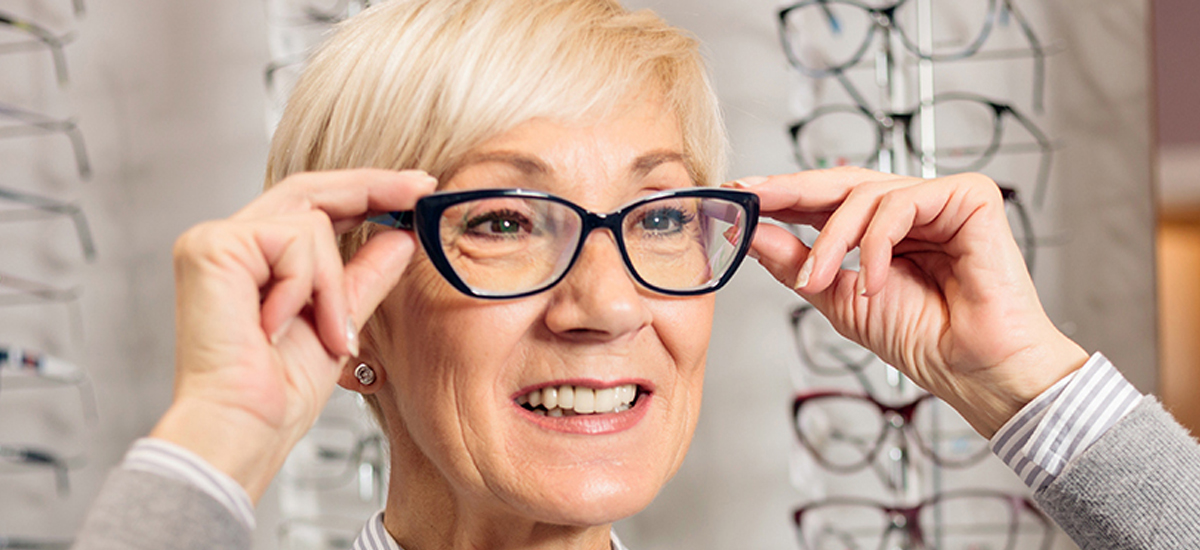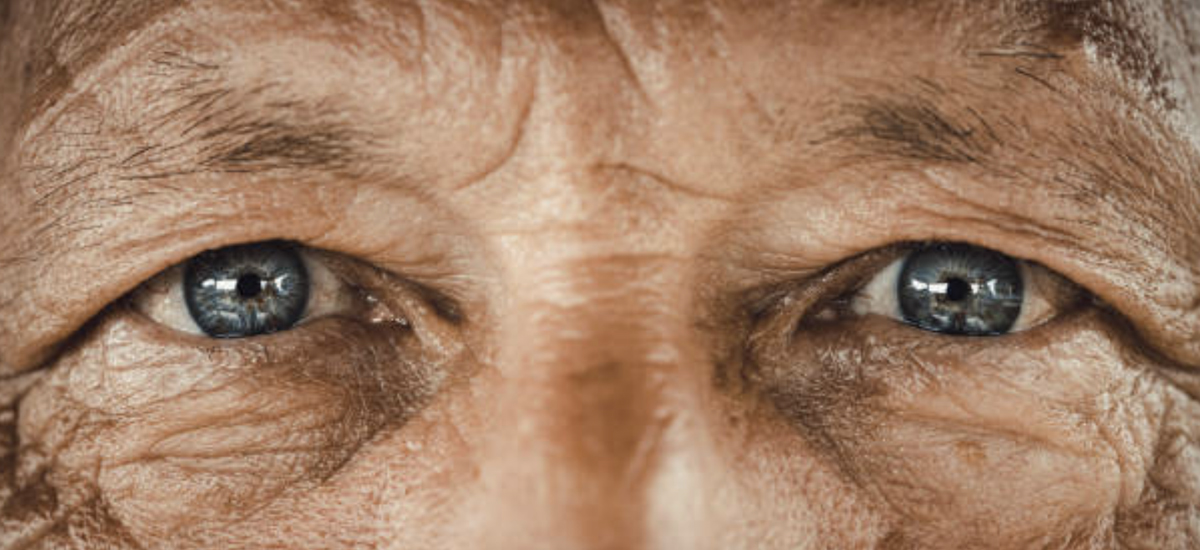What Types of Vision Problems Are Common in Children?

Children’s eyesight and how they do in school are closely linked. Early on, your children will get to practice high-value skills in the classroom, including reading words at a distance and up close, switching focus between different things, tracking moving objects, and much more. (Plus, if they’re athletes or even enjoy just playing sports at recess, they’ll get to develop their hand-eye coordination, another vital skill!)
If a child has problems reading a book close to their face or can’t interpret their teacher’s writing on the whiteboard, that can quickly affect their academic performance. And the thing about kids is that they might not tell you at first since they may think that it’s normal (or they’re apprehensive about wearing glasses).
To stay on top of eyesight issues in your kids, it’s important to know what types of vision problems are common in children and what symptoms to monitor. In this blog, we’ll cover everything you need to know.
Suspect your child has a vision problem? Schedule a comprehensive eye exam with your child’s eye doctor today.
What types of vision problems are common in children?
School tests your child’s eyes every day. Whether your child needs to switch focus from their homework to the whiteboard at a moment’s notice, or your child must memorize and comprehend a large block of text, they’ll need the best eyesight and visual abilities they can get.
What types of vision problems are common in children? Refractive errors seem to happen the most as children go through school. Here are the primary ones to look for:
#1: Astigmatism
This eye issue happens when your child’s cornea takes on an odd form (think: a football versus a soccer ball) or if their eye lens bends at the wrong angle. Both of these factors keep light from going to the retina, which can affect how your child sees visuals.
Astigmatism is known for making children’s vision blurry at various distances, so if your 6-year-old is complaining of blurry vision, seeing an eye doctor right away is essential. If your child has astigmatism, they’ll likely experience other refractive errors. Keep in mind that astigmatism can also progress throughout your child’s school years, making an annual comprehensive eye exam essential.
Astigmatism Symptoms:
- Fuzzy vision all around
- Head pain
- General eye pain
#2: Farsightedness
While your child may have no problems seeing the whiteboard at school or noticing details across the playground, they might struggle to read. This may be due to farsightedness (also known as hyperopia), which can make the text on books look blurry since it’s so close to their face.
Farsightedness happens when your child’s eyes can’t maneuver light at the right level or when their cornea doesn’t bend enough. As one of the most common childhood eye problems, farsightedness can lead to many symptoms.
Farsightedness Symptoms:
- Eye fatigue
- Issues focusing on school work
- Strained eyes after working on a close-up task for too long
- Burning sensation in the eyes
#3: Nearsightedness
Is your child complaining of blurred vision and headaches? It could be due to nearsightedness (a refractive error, also called myopia), one of the most common vision problems in children. It can make it easy for your child to work on their homework at their desk, but it can make them struggle to view the teacher’s notes on the whiteboard.
Nearsightedness results from having an extended eye or a cornea that flexes too much in one direction. This can prevent your child’s eyes from concentrating light on the retina, which can cause blurry distance vision. Nearsightedness symptoms can begin when your child starts school and develop until your little one turns 20.
Nearsightedness Symptoms:
- Discomfort when looking at something far away
- Squinting
- Headaches
- General eye discomfort
#4: Lazy Eye
Has your child ever mentioned that they can’t see well out of one eye but see fine out of the other? That is a symptom of lazy eye (i.e., amblyopia). It can affect a single eye or both eyes, and it can come with crossed eyes (more on this below) or other refractive errors.
If your child is going to get a lazy eye, it’ll typically set in ahead of their 6th birthday. Many things can lead to lazy eye, including genetics, a disability, major refractive errors, or going too long without the proper prescription glasses.
Lazy Eye Symptoms:
- Running into things a lot
- Using one eye more than the other
- Squinting
- Closing one eye to see
#5: Crossed Eyes
Of all of the vision problems in kids, crossed eyes are the ones people think of the most. This eye condition (strabismus) is when your child’s eyes can’t focus in the same direction simultaneously. That can be caused by eye muscle issues or extreme hyperopia.
A child has a higher chance of getting crossed eyes if their parents, brothers, or sisters have experienced the condition or if they have certain health problems. Also, if they have not received a prescription for their farsightedness, crossed eyes can occur.
Crossed Eyes Symptoms:
- Eyes don’t move in unison
- Excessive blinking around lights
- Moving the head at an angle to see something
- Seeing double
When to Schedule a Comprehensive Eye Exam for Your Child
It is important to book your child an eye examination right away if you notice any of the above-mentioned symptoms, in addition to:
- Sudden blurry vision in your child
- Retina problems
- Eye muscle problems
Summary: Eye Issues in Kids
Child eyesight deterioration can happen at any time, but it’s not uncommon for it to coincide with their school years. This is because the classroom can test your child’s vision, from requiring them to refocus their attention to having them use their near and distance vision more than usual.
What types of vision problems are common in children? Refractive errors are what we see the most in school-aged kids. Astigmatism, farsightedness, and nearsightedness are the conditions to keep an eye out for--and blurry vision is a symptom of all of them. Your child may also experience lazy eye or crossed eyes.
If you’re concerned about your child’s vision, don’t worry. Children’s eyesight can improve as they get older. The key is to keep up with your child’s eye doctor appointments, as eye exams are the best way to monitor their vision.
This blog was originally published on April 30, 2020, and expanded in July 2022.
Book your child's eye exam at For Eyes
Has your child had an annual comprehensive eye exam yet? Schedule an appointment with an Independent Doctor of Optometry at your local For Eyes today.












